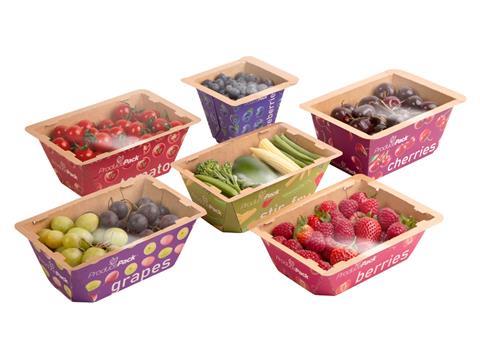
Graphic Packaging International has announced the launch of its ProducePack Punnet, a recyclable paperboard solution that it is marketing as an alternative to plastic punnet trays for fresh fruit and vegetables.
According to the company, ProducePack Punnet can be top-sealed at speeds equivalent to traditional plastic punnets. The solution reportedly works with existing machinery and tooling for plastic trays, meaning that minimal investment is required for packers looking to make the switch to paperboard.
In addition, Graphic Packaging says that, for brands and retailers, the pack has been proven to offer equivalent shelf-life to plastic for certain produce items while reducing the potential for food waste.
A range of board and barrier options are available, and the punnet can be supplied formed or flat, the latter apparently offering CO2 reductions in transit due to higher punnet tray volume per truckload. According to the company, all of these options have been selected to ensure the package remains robust in cold storage and throughout the supply chain.
ProducePack Punnet can also be graphically printed, with the aim of maximizing branding opportunities without the need for additional labelling.
Elodie Bugnicourt, sustainability manager at Graphic Packaging International, said: “The interest we received in ProducePack was extraordinary following its launch earlier this year. ProducePack Punnet now extends the range to new applications such as berries, enabling our customers to reap the environmental benefits of paperboard packaging in a wider variety of fresh produce applications.”
Ricardo De Genova, Graphic Packaging’s SVP, global innovation and new business development, added: “As growers and producers look to move towards recyclable fibre-based solutions, they can count on our expertise to deliver value-added innovation as well as like-for-like functionality versus traditional plastic trays.
“Aligned with our Vision 2025 and DfE methodology, this launch is another example of how we can partner with customers to accelerate the transition to a more circular economy.”











